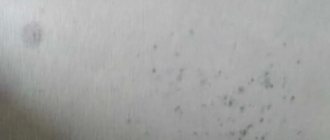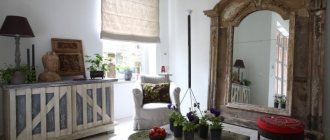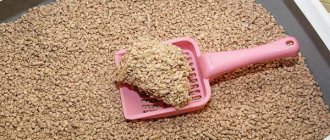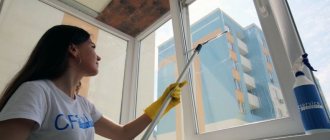If you have certain skills, wallpapering will not be an impossible task. If you know the basic rules and techniques, then even a beginner in construction can cope with this work. To prevent your efforts from going to waste, during wallpapering and for some time after, you need to avoid drafts.
Open windows when wallpapering can lead to disastrous results
How long does it take for wallpaper to dry?
The drying speed of the canvases will depend on their composition.
Paper products dry in 1-2 days, non-woven and vinyl products require a longer period, from 1 to 4 days, depending on the room temperature, as well as the amount and composition of the glue used.
You should not use forced drying at this time:
- turn on heating appliances;
- make drafts;
- dry the canvas with a hairdryer.
The base material also affects the drying speed. If you stick it on a plaster surface, the canvas will dry faster than on a concrete one. Gypsum absorbs moisture better than concrete. Wallpaper also dries quickly on lime plaster, plasterboard and sand-lime brick. A couple of days are enough for complete setting.
The glue itself should also be taken into account. Each type has its own nominal drying time. It is worth paying attention to the glue layer. The thinner it is, the faster it dries.
It is desirable that the primer layer be minimal. If it is too thick, the moisture will evaporate for a long time.
If you have hung non-woven wallpaper for painting, you should wait for it to dry completely and only then paint it. The weight of glue and paint can cause them to slide down.
Is it possible to return wallpaper back to the store under the Law on the Protection of Consumer Rights?
The sale of goods to consumers is regulated by the second chapter of Law No. 2300-1 of 02/07/1992 “On the Protection of Consumer Rights”.
- For what reason can you return wallpaper?
- Returning wallpaper of good quality
- Returning wallpaper of poor quality
- Return period
- What to do if the seller refuses to comply with the buyer's demands
Unscrupulous sellers, when refusing, often refer to the list, which includes goods of good quality that cannot be returned, included in the Decree of the Government of the Russian Federation No. 55 of January 19, 1998. But you should know that wallpaper sold in rolls rather than linear meters is not relevant to this list and can be returned.
For what reason can you return wallpaper?
You can return wallpaper sold in rolls in two cases:
- The product turned out to be of poor quality.
- The product is of high quality, but did not fit . In this case, the law provides for an exchange for another product, and if the store cannot provide a suitable replacement, then a refund.
Returning wallpaper of good quality
In accordance with Article No. 25 of Law No. 2300-1, goods of good quality, including wallpaper in rolls, can be exchanged if such goods do not suit the buyer in size, configuration or any other characteristic.
The main condition for returning wallpaper of proper quality is the fact that the product must be in salable condition and not be used.
Returning wallpaper of poor quality
You can return low-quality wallpaper in accordance with Article No. 18 of Law No. 2300-1, which states that if defects are discovered, the consumer has the right to return the product to the seller and receive a refund for the purchase.
The money may be returned immediately, or they may be asked to write a return application, then the money will be returned within ten working days.
Return period
As Article No. 25 of the Law “On Protection of Consumer Rights” states, wallpaper of proper quality must be replaced or returned within fourteen working days from the date of purchase. The period is counted from the next day after purchase.
It should be remembered that if the wallpaper was purchased via the Internet, then in accordance with Article No. 26 of the above law, the product can be returned within seven working days.
Rules for wallpapering
When wallpapering, it is important to observe the microclimate. The air temperature in the room should be within 15-25°C. In cool weather, the canvas will take too long to dry, and in hot weather it will dry out quickly. You will have to constantly lubricate the dried areas with glue.
Air humidity should be 50-60%. In summer, the air is drier, so the room should be regularly sprayed with water from a spray bottle. If the humidity in the room is above 60%, the wallpaper will begin to absorb excess moisture, which will negatively affect the appearance of the product.
Excess moisture can be removed using a dehumidifier. It is used before work begins and upon completion.
In the room where wallpaper is being glued, windows and doors must not be opened. This will lead to drafts. The glue will dry quickly, the canvases will not have time to grip the wall surface, so they will begin to come off. They will have to be glued over time, and such manipulations can negatively affect their appearance.
Vinyl and paper products react especially strongly to drafts. Blisters will appear on the surface, and in some cases the canvas may come off completely.
Bubbles that appear during gluing can be easily corrected. You should not leave them thinking that they will disappear when they dry. It is necessary to pierce the bubble with a needle and inject wallpaper glue into it through a syringe. Afterwards the canvas is pressed by hand.
If swelling occurs in the corners, then make a small incision, release the air and treat the canvas with glue.
Sometimes it is not possible to re-glue up a strip of wallpaper that has come off and you have to buy new material. This is an extra expense.
What comes first: window repair or installation?
When planning to do repairs, we often ask ourselves the question: in what sequence should we carry out the work? Many people do not understand at what stage of the work they need to install new windows, because the installation itself is a dusty and “dirty” process.
Ideally, it is worth combining glazing renewal with at least cosmetic repairs. Then the restoration of the slopes and the opening as a whole, as well as the walls around it, will harmoniously fit into the creation of the overall design of the room. First, you should decide what type of repair you have planned, and then decide on the sequence of actions.
Types of repairs
There are several broad groups of repair work:
| Cosmetic | Provides for almost superficial renewal of coatings around the entire perimeter of the room or some of its individual parts. It includes finishing in the form of various wall decor, laying linoleum or laminate, and replacing doorways. As a rule, such processes do not require radical restructuring measures and do not provoke the formation of large amounts of debris, but during plastering dust may be released during leveling of the surface layer. |
| Capital | Aimed at radical restoration or complete replacement of architectural elements and communications. This process involves replacing communications (electrical wiring, plumbing and heating, plumbing), as well as transforming and moving the location of doors, interior walls and opening floors. The final stage is the finishing of surfaces. In most cases, even a banal replacement of the laminate is enough to start a major overhaul. |
| New building | Such repairs in a new building usually include a “basic set” of alterations, affecting the walls, ceiling, floor, doors, windows, water and heating risers, sewerage, and electrical wiring. Such work is usually called renovation, although in essence it is large-scale internal construction. |
Influence of room temperature
The air temperature in the room must be constant. With sudden changes or cold air flows, paper products wrinkle and become covered with bubbles. Non-woven and vinyl products may come away completely from the wall. This is why drafts should not be allowed to form by opening windows and doors.
If the windows of the room face the sunny side, they must be covered with curtains or paper. Black film cannot be used. During the day it will heat up and the air temperature in the room will become even higher.
When will the glue dry?
It takes 36-48 hours for the glue to dry completely after wallpapering. Paper sheets dry completely in a couple of days at a temperature of 20°C. After gluing, the window can be opened a day later. There is no time to turn on the air conditioner or additionally humidify the air.
You can determine the condition of the wallpaper by hand. If there are no wet areas, the canvases are completely dry.
Liquid wallpaper dries in about a day. The lower the humidity in the room, the faster the drying process will take place. Check their condition with the palm of your hand. If the coating does not stick when you touch it, you can continue finishing work.
Compositions with cotton and cellulose are sensitive to drafts. If there are polymer additives, the wallpaper will take longer to dry, but they are not afraid of difficult conditions.
How long does it take for vinyl wallpaper to dry?
It will take three days for vinyl wallpaper to dry completely. With proper preparation of the wall and selection of high-quality glue, this period can be reduced to two days. Windows cannot be opened at this time.
While the vinyl sheets are drying, other repair work may be carried out. This could be installing a new window sill, pipes, or painting the baseboard. The paint should be odorless. You cannot install suspended ceilings; they require open windows.
Vinyl products with a paper backing dry in 18-24 hours.
How long will non-woven wallpaper take to dry?
Fully non-woven fabrics dry within a couple of days. During repairs, you cannot open doors and windows, turn on a fan, air conditioner, or heating appliances. They react less to cold air flows than vinyl and paper ones, but it’s still not worth the risk. It is allowed to open the window only in the warm season. In order to prevent deformation, it is necessary to wait a day after gluing.
More often, problems with non-woven wallpaper arise from incorrect gluing techniques rather than from cold air flows. When working with them, it is allowed to turn on the fan at low speeds.
During the day, non-woven paper wallpaper dries. Under favorable conditions, 8 hours will be enough for them.
Where did this rule come from?
The ban on open windows is a truism that is rarely questioned. But in vain. Not all people turn to repair teams to hang wallpaper, and not everyone will even look for information on the topic on the Internet. That is why we often rely on the experience of the older generation, who are confident: it is enough to close the door abruptly, creating a draft, and the half-dry wallpaper will certainly end up on the floor. But is this really so?
A couple of decades ago, few people had heard of non-woven or vinyl, and the wallpaper in the apartments of 99% of the population was, naturally, paper-based. It was not difficult to glue them, but there was one caveat: the paper wallpaper had to dry evenly and slowly, since drying in patches led to deformation of the canvas, bubbles, wrinkling, and even partial or complete peeling from the wall. An open window created a temperature difference and a draft that dried the canvas unevenly, which is why it was so important to close it. Now it’s clear why it was believed for a long time that the slightest draft could completely ruin the fruits of your efforts.
By the way
It has always been believed that when covering walls, the window should remain closed, and this is still true: despite some positive experiments, an open window can interfere with the drying process, regardless of the type of wallpaper you use.
How to prepare walls for gluing?
Windows should be kept open during preparatory work. When the walls are cleared of old coating, a lot of construction dust will appear in the room. To remove it from the wall surface, use a brush or vacuum cleaner.
preparing the wall for wallpapering
Afterwards, the cracks are filled with putty and irregularities are removed. The prepared wall is primed. The primer will provide better adhesion of the wallpaper to the wall. You can prepare it yourself. To do this, the adhesive composition is diluted in water and all walls are completely treated with it. If there is no primer, the wallpaper will begin to peel off at the joints and edges.
What is there not to worry about?
No need to worry about an open window in the neighboring rooms. They can be ventilated during repairs. Also, you should not be in a stuffy room when hanging vinyl and non-woven wallpaper. During drying, they react to a draft, however, in the absence of one, an open window will not harm.
You should not restrain your movements for fear that the air currents from flapping your arms will damage the wallpaper. They only react to a constant draft. You should carefully exit and enter the room. In this case, the door must be opened slowly.
Do not wait an additional 2 days after drying. If the room is stuffy, you should open the window. This will have a positive effect on your health, because prolonged stay in a stuffy room negatively affects brain function.
If you start gluing wallpaper in the morning, then the next day you won’t have to worry about open windows and doors.
Why can't you open windows?
The answer is to prevent the situation with rapid drying of the glue. Otherwise, the materials peel off from the surface, and it becomes necessary to additionally trim the joints. Paper and non-woven materials cause the most problems. All types of substrates suffer from defects if the temperature changes too sharply. The premises must remain closed for at least 2-3 days. Another question is whether it is possible to glue wallpaper with the window open.











